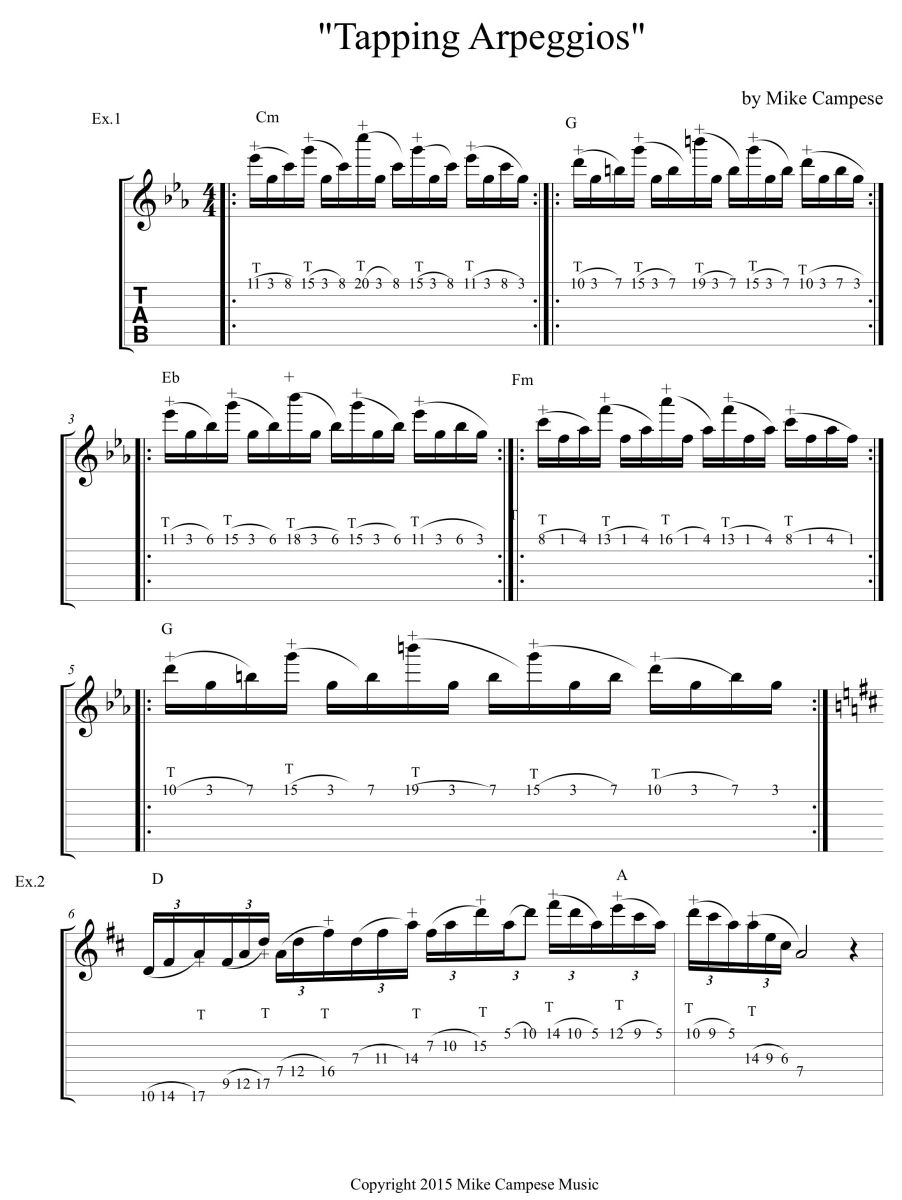Welcome back! This lesson I will be showing you more triad arpeggios, but this time we will be using two hand tapping. Hopefully, by now you know how all the basic triads are built and you know how to play them on all strings. I don't do a lot of two hand tapping in my style, but it can be a great way to learn the chord tones on all different parts of the neck and to be able to outline chord changes. Also, for the first half of this lesson we will be focusing on playing arpeggios on one string like we did in the last lesson. Let's get right to it.
Example 1 is triad arpeggio progression with two hand tapping that is based in the key of Cm and it is played all on the high E string. The first triad is C minor, (C, Eb, G), the next one is G major (G, B, D) that is borrowed from the C harmonic minor scale. The third arpeggio is the relative major, Eb (Eb, G, Bb), then to the 4 minor, Fm (F, Ab, C) and then finally back to G, which resolves back to the Cm. I have listed the tapping symbols in the notation.
MP3 - Tapping Arpeggios, Example 1
Example 2 is another triad arpeggio example with two hand tapping that is based in D major. This example moves across the strings and uses the triad inversions of an D major arpeggio (D, F#, A) and then resolving to an A major triad (A, C#, E). This one can be tricky at first and once you memorize the positions it will be a lot easier to play.
MP3 - Tapping Arpeggios, Example 2

OK, that is it for now! Be sure to make up your own triad tapping ideas and don't forget to visit mikecampese.com.
Mike Campese is an all-around music performer, session artist and teacher competent in many musical styles, electric and acoustic. He has studied at G.I.T. (Honors Graduate), and with Paul Gilbert, Norman Brown, Stanley Jordan, Scott Henderson and Keith Wyatt.